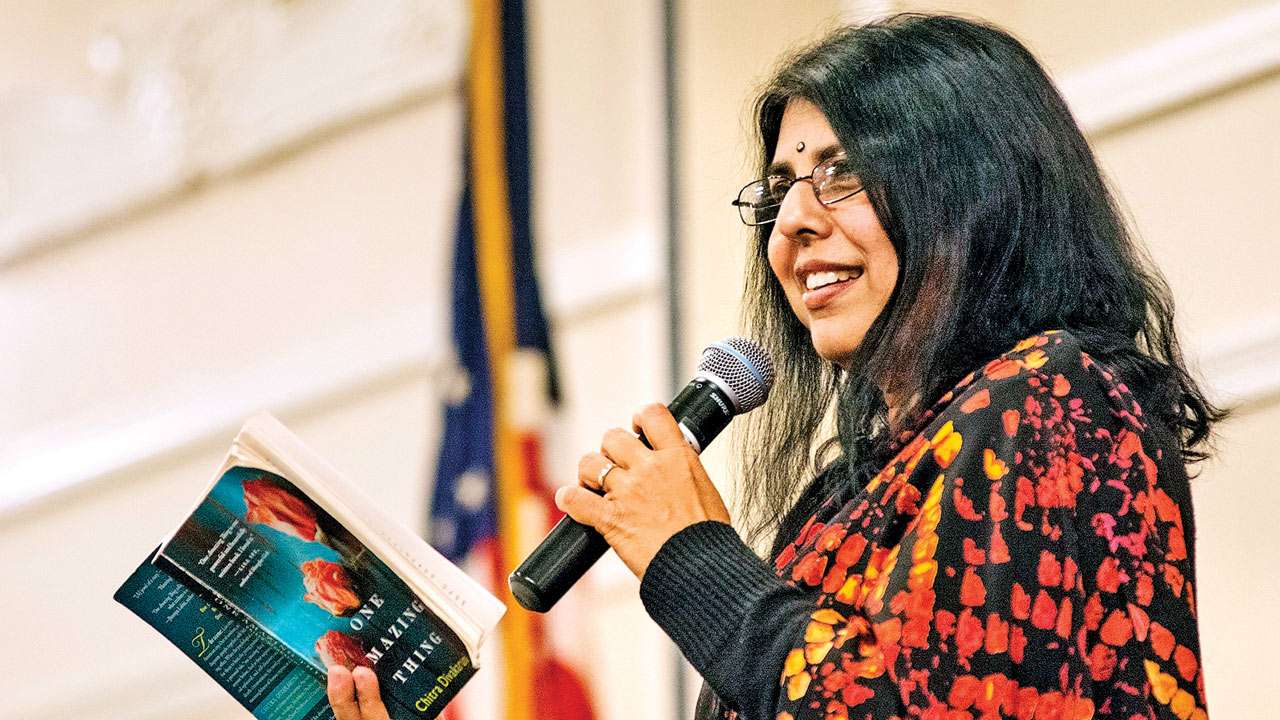
Chitra Banerjee Divakaruni’s 2008 novel The Palace of Illusions was evolutionary to say the least. The Indian-American author attempted to tell the story of Mahabharata’s tragic queen Draupadi through the fearless and brave Panchaali, eventually rewriting the way Draupadi was perceived. With her latest The Forest of Illusions, Divakaruni has set out to retell the story of Ramayana through Sita. And not just her but the other female characters of Kaikeyi, Surpanakha, Mandodari as well. She tells us about writing Forests... and more. Excerpts.
Yes, readers are more vocal and appreciative of Panchaali’s character. They like her outspokenness, flaws, and tongue-in-cheek humour. They love her relationship with Krishna. I think readers are now open to imperfection in women heroines as well as their spiritual journey.
In the original Mahabharata, we are not given many glimpses into Draupadi’s character – just what happens to her and what she says or does in response. It is an external portrait. I attempted to show Panchaali’s inner being – her motives, feelings, her heartbreaks. Her “why”. That is exactly what I have done in The Forest of Enchantments now, with Sita.
We have to keep in mind two things:
The Forest... creates a full life for Sita – from her childhood and her love for all things of the earth, to her romance with Ram, to her courage and endurance in Lanka, to her resilience after her heartbreaking banishment by Ram. A big part of the book is her relationship with other women – Kaikeyi, Ahalya, Surpanakha, Mandodari, her own sister Urmila. We understand her joys and pains, her modes of thought. Most of all, we understand how strong she is.
They both have significant #MeToo moments. They speak out against them and are strong in their sense that they are not in the wrong, or defiled, just because they have been victims of physically stronger men. Indeed, they triumph over their circumstances because of their confidence and inner strength. They refuse to compromise. I think contemporary Indian women will resonate with that.
That is a very deep question – we’ll have to have a whole other interview for that! But here’s one thing I believe and show in both Palace of Illusions and Forest of Enchantments: we cannot really love someone else until we have learned to love ourselves in the right way.
Yes, I think this is important. Women are wonderful and human. We have flaws, just like men do. We have strengths, too, just as they do. We want autonomy, just as they do. It is time to accept our rich and multifaceted nature. Sita shows us a wonderful way of being strong and self-respecting without being strident. She is truly a role model – but not in the way tradition has wrongly depicted her.
Both deal with important and game-changing events in human civilisations. But mythology is also full of deeper, mysterious truths about life. This often emerges as magic. That is where belief and the imagination must take over – and that is the great value of myth. It goes deep into our souls and can transform our understanding of how the world works.
A historical novel set in British times.
I’ve been reading a lot of short stories. Men without Women by Haruki Murakami is a favourite.
I read them carefully and objectively to see what I can learn from them about being a better writer. The rest I try to discount.
The worst criticism: “Be careful of what you write otherwise you’ll upset people.” The best (from my children, after they read the draft of The Conch Bearer): “Ma, you use too many big words!”